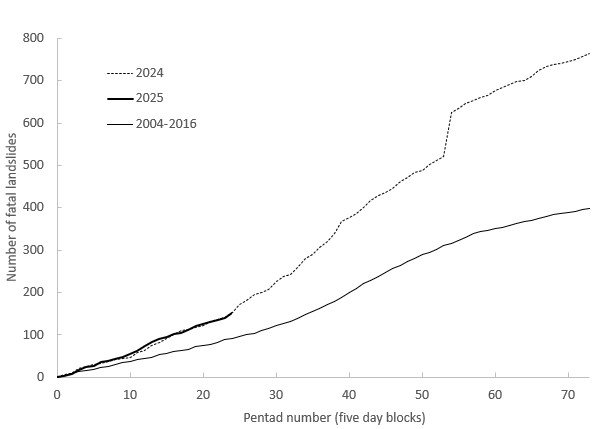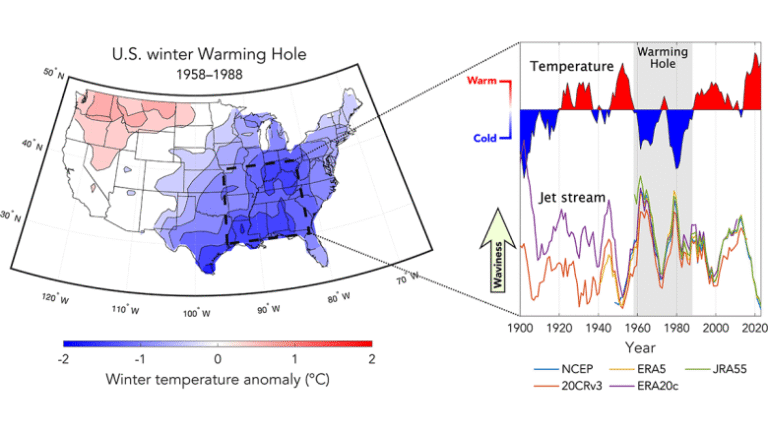

In April 2025, I recorded 41 fatal landslides that cost 107 lives.
I’m somewhat behind with posting updates on global fatal landslides due to other workload pressures – please accept my apologies. Please be assured that I’m still collecting the data and that I will make a summary available as soon as I can.
Somewhat belatedly, here is a summary for April 2025 (the same report for the previous month is available here). As always, a reminder that this is a dataset on landslides that cause loss of life, following the methodology of Froude and Petley (2018). At this point, the monthly data is provisional.
The headlines are as follows. In April 2025, I recorded 41 fatal landslides that cost 107 lives. The April Average for 2004 to 2016 is 28 fatal landslides, so this is once again substantially above the long term mean. In the exceptional year of 2024, I recorded 40 landslides, so as at 30 April 2025, the cumulative total is proving to be comparable to the prior year. This is a little bit surprising.
Loyal readers will know that my preferred way of displaying these data is using pentads – 73 five day blocks over the course of the year. The end of April takes us to pentad 24:-

As the graph shows, the cumulative total number of fatal landslides to the end of April 2025 has tracked in a very similar way to April 2024. The trend is very substantially higher than for the long term average. But note also that 2024 saw a very early transition to the much higher event rate through the Northern Hemisphere summer (in 2024 this occurred in the latter part of April, the norm is at least a month later). At the end of April 2025, it was too early to tell whether this would be replicated.
I find this continued high rate of global fatal landslides through April 2025 quite surprising, but global temperatures have remained high. As the US Government dismantles its climate infrastructure (an act of pure vandalism), we are increasingly reliant on data being provided elsewhere. Fortunately, the European Copernicus Clime Change Service system remains wonderful and fully available. This shows that:
“April 2025 was the second-warmest April globally, with an average ERA5 surface air temperature of 14.96°C, 0.60°C above the 1991-2020 average for April. April 2025 was 0.07°C cooler than the record April of 2024, and 0.07°C warmer than the third warmest of 2016.”
Thus, the high event rate for fatal landslides may be associated with the continued high global temperatures, and thus high peak rainfall intensities, through the early part of 2025.
Reference
Froude M.J. and Petley D.N. 2018. Global fatal landslide occurrence from 2004 to 2016. Natural Hazards and Earth System Science 18, 2161-2181. https://doi.org/10.5194/nhess-18-2161-2018
Text © 2023. The authors. CC BY-NC-ND 3.0
Except where otherwise noted, images are subject to copyright. Any reuse without express permission from the copyright owner is prohibited.



